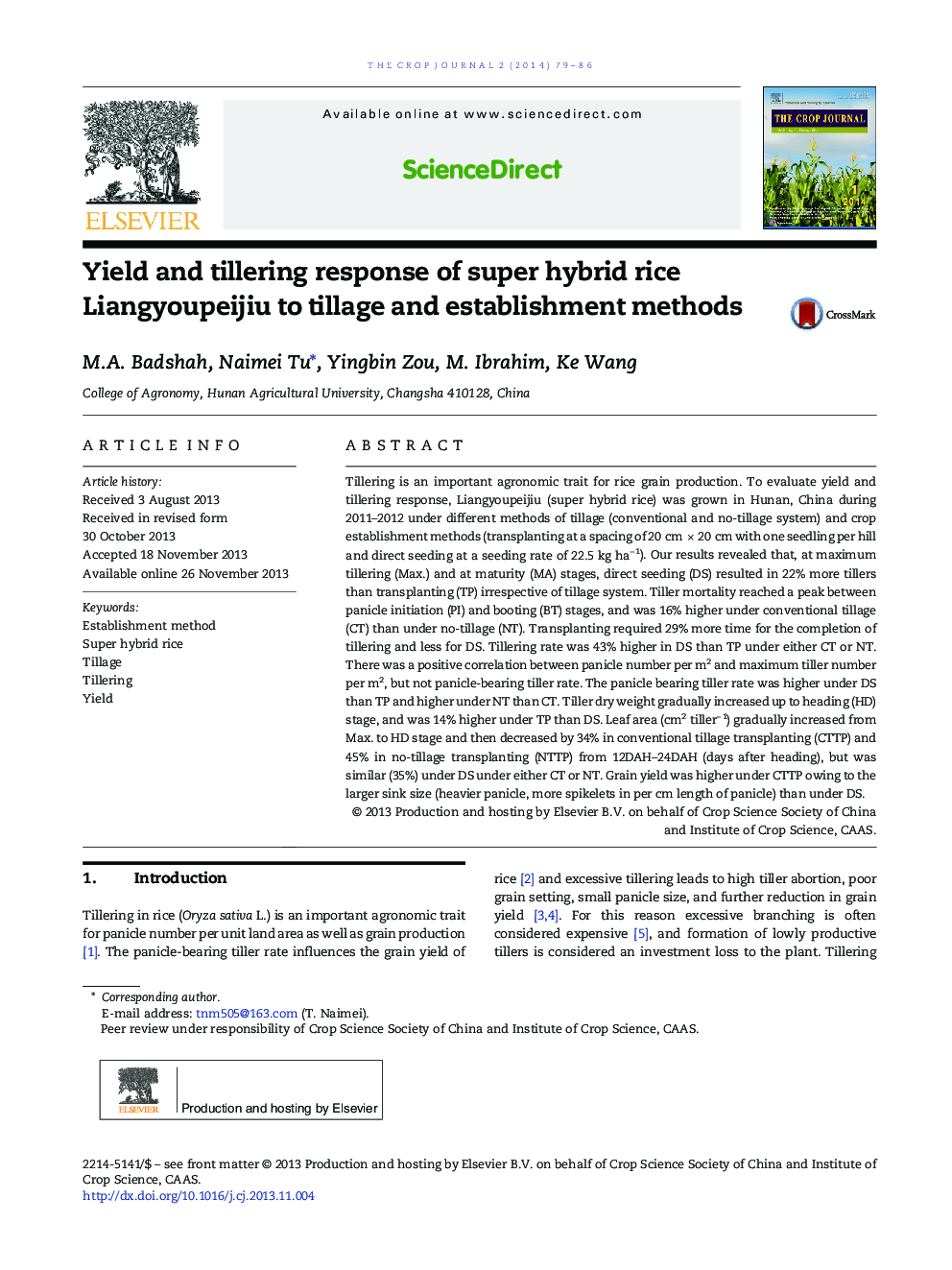| Article ID | Journal | Published Year | Pages | File Type |
|---|---|---|---|---|
| 2079566 | The Crop Journal | 2014 | 8 Pages |
Tillering is an important agronomic trait for rice grain production. To evaluate yield and tillering response, Liangyoupeijiu (super hybrid rice) was grown in Hunan, China during 2011–2012 under different methods of tillage (conventional and no-tillage system) and crop establishment methods (transplanting at a spacing of 20 cm × 20 cm with one seedling per hill and direct seeding at a seeding rate of 22.5 kg ha− 1). Our results revealed that, at maximum tillering (Max.) and at maturity (MA) stages, direct seeding (DS) resulted in 22% more tillers than transplanting (TP) irrespective of tillage system. Tiller mortality reached a peak between panicle initiation (PI) and booting (BT) stages, and was 16% higher under conventional tillage (CT) than under no-tillage (NT). Transplanting required 29% more time for the completion of tillering and less for DS. Tillering rate was 43% higher in DS than TP under either CT or NT. There was a positive correlation between panicle number per m2 and maximum tiller number per m2, but not panicle-bearing tiller rate. The panicle bearing tiller rate was higher under DS than TP and higher under NT than CT. Tiller dry weight gradually increased up to heading (HD) stage, and was 14% higher under TP than DS. Leaf area (cm2 tiller− 1) gradually increased from Max. to HD stage and then decreased by 34% in conventional tillage transplanting (CTTP) and 45% in no-tillage transplanting (NTTP) from 12DAH–24DAH (days after heading), but was similar (35%) under DS under either CT or NT. Grain yield was higher under CTTP owing to the larger sink size (heavier panicle, more spikelets in per cm length of panicle) than under DS.
